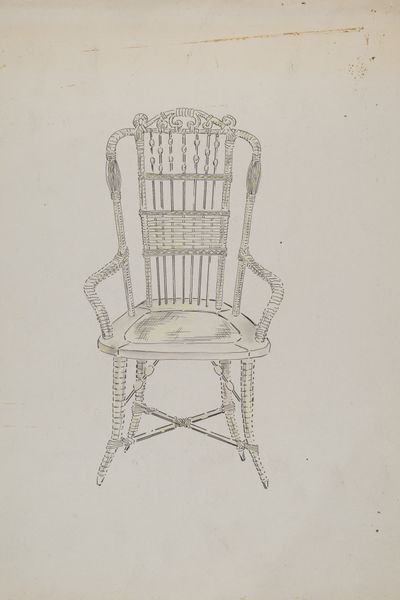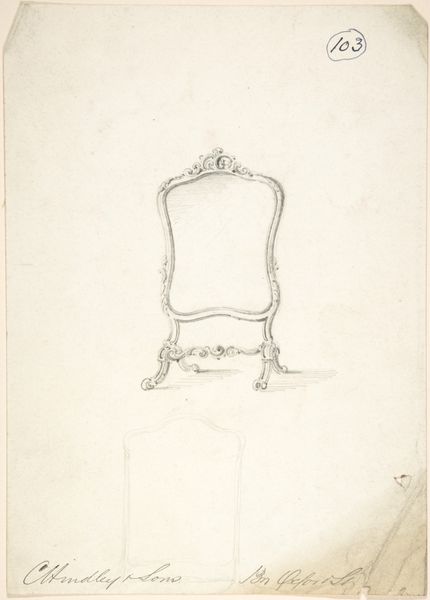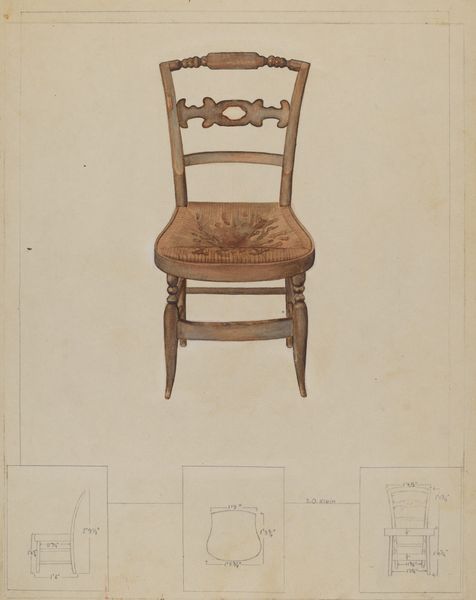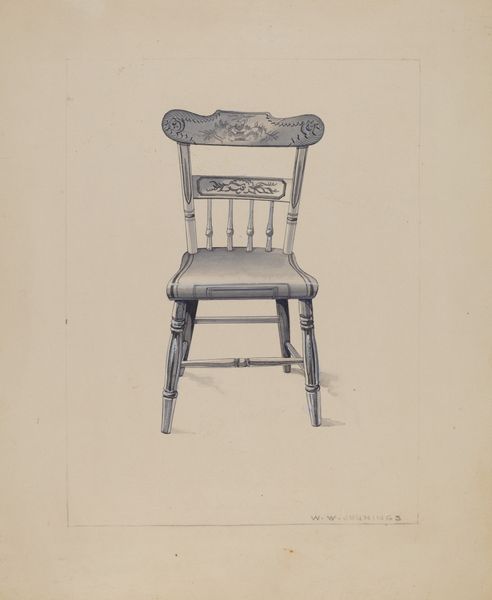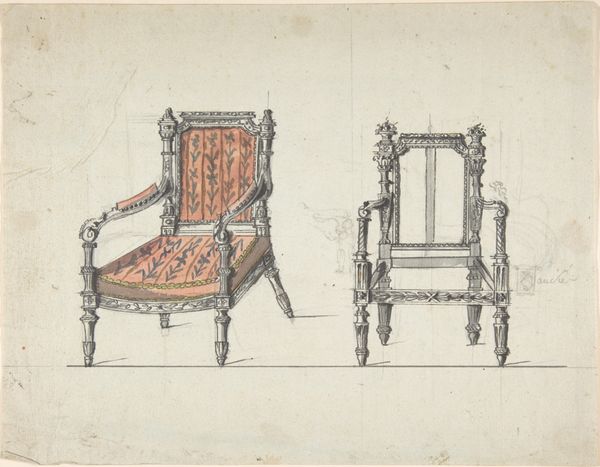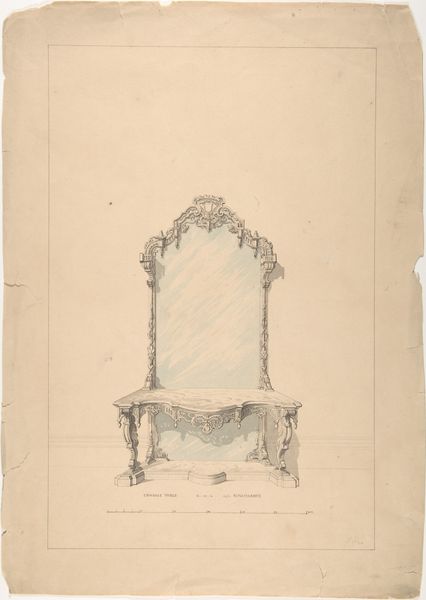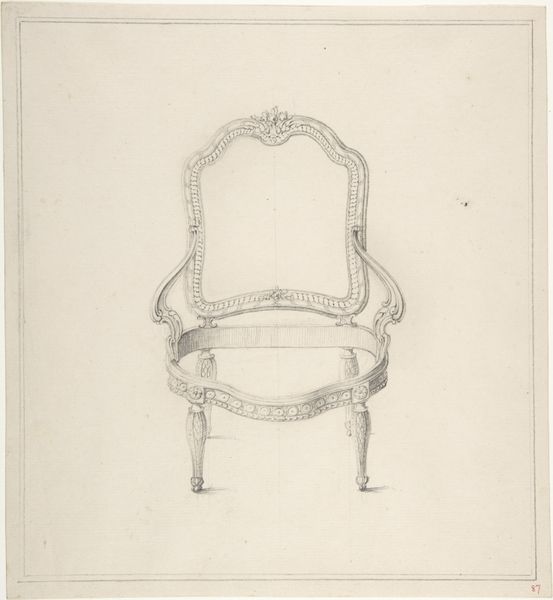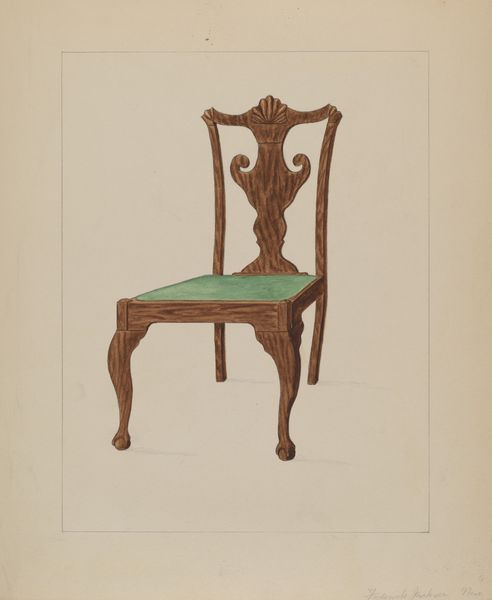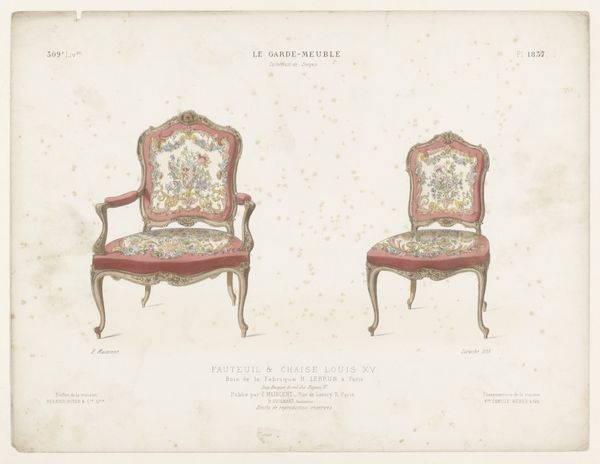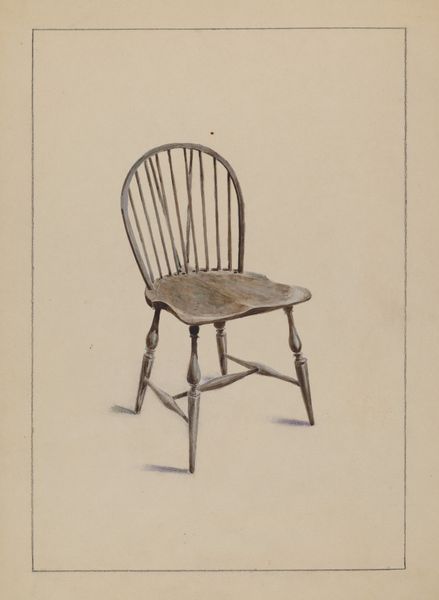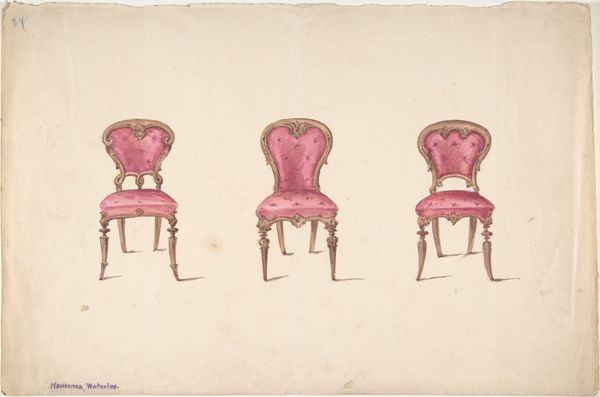
Design for Armchair, François Premier Style 1835 - 1900
0:00
0:00
drawing, print
#
drawing
# print
#
figuration
#
history-painting
#
decorative-art
#
watercolor
Copyright: Public Domain
Curator: At first glance, it feels like an illustration plucked from a fairy tale—all delicate lines and ornate carvings, suggesting a realm of fantasy and leisure. Editor: Indeed. What we're looking at is a "Design for Armchair, François Premier Style," dating from 1835 to 1900, created by Robert William Hume. You'll find this drawing and print housed right here at the Metropolitan Museum of Art. Curator: The rococo style of the chair stands out, those elegant curves practically invite you to trace them, almost as if the design wants to escape its two-dimensional constraints. I'm curious, though, about the context. "François Premier Style," speaks volumes about a return to historical precedent. Editor: Precisely. This piece reflects a 19th-century fascination with earlier eras, specifically drawing inspiration from the French Renaissance court of François I. The revival suggests a yearning for the grandeur, elegance, and perceived stability of that historical period, against a backdrop of socio-political flux in the 19th century. Curator: So, it's not just a pretty chair design, but a statement about identity and power. Furniture has always served as an extension of the self and environment, right? Editor: Certainly. By emulating historical styles, those who commissioned or possessed such furniture could align themselves with perceived aristocratic virtues or dynastic lineages. Think of the armchair, as an object with inherent class associations in that era. Curator: It makes you wonder who might have sat in this type of chair. It wasn't just for comfort; it projected a carefully curated image. What materials would it have been made of? What about its presence in an interior space? It's a window into a very particular worldview. Editor: Consider also the craftmanship embedded in this object. Even at a preliminary design stage like this watercolor, one can imagine the techniques to carve such intricacies into the wood. It evokes the luxury trade, and class differences as it stands against a burgeoning Industrial Revolution. Curator: A fusion of technique and artistry, intertwined with social significance...it definitely pushes beyond a mere aesthetic exercise. Thanks for elucidating that—I have an expanded appreciation now. Editor: My pleasure; looking beyond the image to its position in a broader cultural fabric provides such insight.
Comments
No comments
Be the first to comment and join the conversation on the ultimate creative platform.

